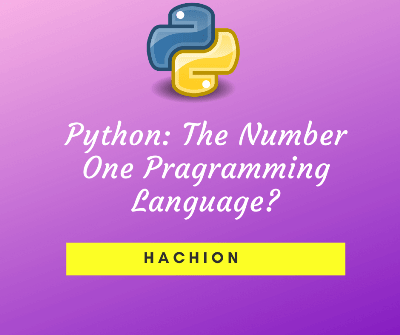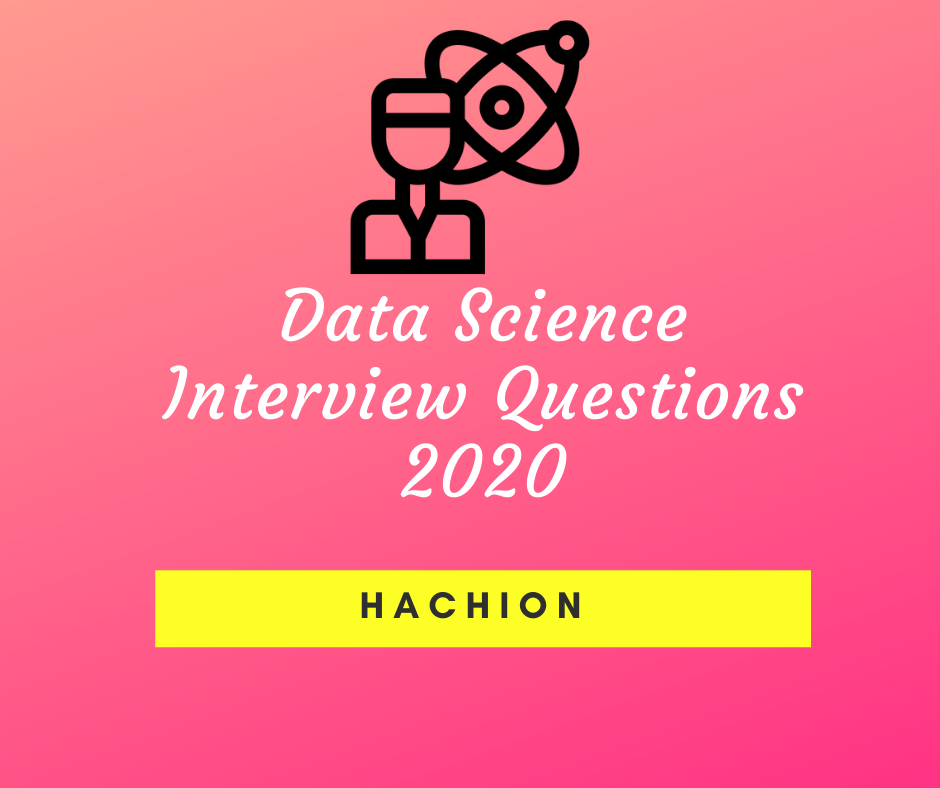
Python: The number one programming language
You may hear that python is becoming a more popular programming language...! Yes, it is now the most desired learning language in US universities. According to the IEEE survey, it is the third most trending programming language behind the old classic programming languages like Java, C, and C++.
Students who are looking to move up the career ladder in top companies by learning simple code language. Here we help to have a deep dig into the simple Python programming language with its importance, demanding features and applications.
First, What is Python?
Python is a high-level, interpreted, general-purpose and object-oriented programming language with effective semantics. Python is designed to read and write easily to provide desktop GUI applications, websites, web applications, and system scripting. Python is a simple, easy syntax that intensifies readability hence reduces the time of application development and cost of program maintenance.
- High-level language: Python uses ordinary language elements which makes it easy to use and understand the code language. It automates significant areas of computing systems which makes developing the program process understandable and simpler.
- Object-oriented language: Python uses data structures consisting of data fields and methods together with their objects to design programs. It helps in developing applications using an object-oriented approach that combines object, class, method, inheritance, polymorphism, data abstraction, and encapsulation.
- General Purpose language: Python is a general-purpose programming language that means it can be applied to any field. Python is extremely useful for developing software in backend web development, scientific computing, artificial intelligence, and data analysis applications.
- Interpreted language: Python interpreter is directly executing the code by converting it into an intermediate code generally called it as byte code. Python allows directly writing a program without compilation before execution. It supports a fast edit-test-debug cycle that makes a simple effective approach. This surely increases the speed of execution.
- Dynamic language: Python is a dynamic programming language that combines both mathematical optimization and computer programming methods over plain recursion. This optimization provides simple resolutions and reduces timing complexities. It has built-in data structures blended with dynamic typing and dynamic binding.
Why is Python is considered as number one programming language?
Python language is remarkably easy to learn and use. Many top companies like Google, Pinterest, Instagram, Dropbox, etc. use python for its app development. Many developers use Python to build productivity tools, desktop apps, games, etc. Let’s look at some of the compelling reasons that make Python applications in many fields:
Code Readability and Maintenance: To design any software application, we require qualitative source code to simplify updates and maintenance. Python syntax rules allow expressing concepts without writing any additional code. It intensifies code readability which makes use English keywords instead of punctuations. It becomes easy to build any custom applications with python code language. The readable and clean program code helps in maintaining and updating software with less effort in a short time.
Multiple Programming Paradigms: Python supports many programming paradigms that include procedural, object-oriented, imperative, and functional programming. Python allows flexibility in programming style like a developer can write code in the procedural or objective oriented or functional style. Several paradigms can be used to code a single program or else you can stick to a single style of coding. Python lets developers use the familiar style that best suits the application.
Complex Software Development Environment: As Python is a general-purpose programming language, it has numeric applications in software development like from simple web applications to complex scientific applications. Python has special features to promote data analysis and visualization. Use python data analysis features to create big data solutions that require less effort and time. Python data visualization libraries and APIs help to visualize the data in a more appealing and effective way. Applications of python are endless in the field of data science and artificial intelligence.
Multiple Open Source Frameworks and Tools: A wide range of open-source Python frameworks, libraries and development tools helps in the reduction of application development cost and time. For a specific application, the developer can easily find his required framework or tool from the wide range of python frameworks and development tools. For example, to develop desktop GUI applications you can use Python GUI toolkits and frameworks like PyJs, PyQT, Kivy, PyGUI, WxPython, and PyGTK. It will be easier and faster web application development through robust Python web frameworks like Flask, Django, Bottle, Cherrypy, and Pyramid.
Large Standard Library: Python's standard library is very expansive and offers a wide range of facilities. The library contains built-in modules written in C and provides access to File I/O system functionalities. And some other modules are written in Python that provides standard resolutions for many problems that occur in everyday programming. Some modules are specially designed to enhance the portability of Python by simplifying platform-specifics into platform-neutral APIs.
Cross-Platform Compatibility: Python is a cross-platform language that works on different operating systems like Windows, Linux, UNIX, Macintosh, etc. That enables programmers to develop software programs for several competing platforms by coding only once. Cross-platform software can run on most of the systems with less or no modification.
Test-Driven Development: Using python for creating software application prototypes is very simple because it is easier to build the software application directly from the prototype simply by refactoring the Python code. Python test-driven development makes it easier for coding and testing simultaneously. And it makes it easy to write the required tests before writing code and use the tests to assess the application code continuously. The test cases can also be used for checking if the software application reaches its predefined requirements based on its source code.
Portable and Extensible: Python has several powerful applications as it can be integrated with other programming languages. Some examples of python extensible with other languages are given as follows:
- Python integrated with Java - Jython
- Python integrated with C - CPython
- Python integrated with Ruby - RubyPython
- Python is written with Objective C toolkits- PyObjc
- Python is compatible with .Net and C# - IronPython
Scripting and Automation: Python is also used as a Scripting language. In scripting, the source code is written in script form to get executed. So the code is compiled and interpreted by the machine and checks for any errors during runtime. Once the code is verified then it can be used multiple times. Using python it is possible to automate some specific tasks in testing the code. Writing scripts and automating tool stuff highlights the power of Python.
Why Choose Python Programming Language?
Python is one of the most popular programming languages due to its simple syntax, wide resources, libraries, and large community. The future demand for Python is immense because it has wide features that make it useful in small embedded systems to big server applications. Let’s look at some reasons why you choose Python?
Simple and Easy to Learn: Python is a simple and easy learnable language that is the biggest reason for beginners to choose Python. The learning curve is smoother than other languages such as Java, C#, etc. Python is an easy language to master because it closely resembles the English language and easy code readability and maintainability. Python syntax has a few simple rules and special cases. For example, if you want to print ‘hello world’ in any other language, it takes at least three lines of code, whereas, in the case of Python, just one line is enough to print ‘hello world’!
Jobs and Growth: Python is an easy programming language for beginners as it has all-powerful necessary resources to get work done. If you want to start a career in software development, Python is a better language to learn as it is a fast-growing language where lots of projects are using python. Because of its unique features, it has many applications in areas such as web development, data science, machine learning, artificial intelligence, web scraping, game development, scientific and numeric computing, etc. The versatile nature of python not only allows you to have many job opportunities in different domains but also accelerate your career growth. The flexibility of python language provides a choice for the developers to switch between different fields.
Scope and Demand: Python is the fourth most popular programming language out of 100 languages according to the TIOBE index. As big data becomes more popular, python is finding applications in Data Science, AI, and Machine learning fields. Python is gaining tremendous demand as it can be integrated into web applications. Every year the latest updated versions of python are released with advanced features.
Many beginners prefer to learn python language over other traditional programming languages because it has simple, versatile tools and easily maintainable resources. The future scope of Python is immense as it is spreading evenly across many top companies like Facebook, Google, NASA, Quora, Amazon, Reddit, Netflix, Dropbox, Instagram, etc. Even many startup industries also choose python for its wide requirements because it is an open-source, user-friendly, scalable, robust and innovative nature.
Salaries: Python is the second most demanded skill particularly in the fields of Data Science, Machine learning, Artificial Intelligence, and web development. And also Python developers are offered with a great pay scale. The average salaries of python developers in India and the US are given below from Glassdoor. The pay may vary with the experience, location, and domain.
The average salary of a Python developer is $76,526 per year in the United States.
The average salary of a Python developer is 428k per year in India.
Community: If you have any technical issues while learning or working on projects with Python you can easily take help from thousands of Python community members. The developers will give you suggestions or code to solve arisen issues. StackOverflow is a Python community that brings many Python experts together to help each other. According to StackOverflow, the number of visitors is increasing more rapidly regarding queries on python on their site than any others, claiming that Python will be the fastest-growing popular programming language in the world.
What are the Applications of Python Language?
Python is a top-picked programming language by most of the universities and industries. Python can be used in many applications like building simple scripts to complex software applications because of its limitless features like simplicity, readability, efficiency, etc. Many tech giant companies are using Python language to create amazing things from scratch. Let’s see some important applications of the Python language.
Data Science: Nowadays, most data scientists use Python to conduct further studies and research on Data Science. In fields of software development, IT ops, or marketing, currently every firm makes use of data and analyzes that data to drive their business operations. Python has huge libraries like Numpy for scientific computation, Scipy for advanced computing making it one of the best languages for Data Science. And also, big data and analytics can be represented using Python’s data visualization tools. Some of the python tools like Pandas, Seaborn, Bokeh, Pygal, and are mostly used to create statistical data graphs and interactive graphical plots.
Artificial Intelligence: Python is an interpreted language that means the user can directly run the program without compiling code into machine language before its execution. This Python feature allows the advantage of codes comprehensive and easy interpretation by an emulator or a virtual machine.
The growth of artificial intelligence and machine learning is remarkable in the last couple of years, and in the near future, it will surely lead the future IT. Python’s Keras and TensorFlow libraries enable machine learning functionality and libraries like OpenCV support in image recognition or computer vision. Pybrain is Pythons library for machine learning making it one of the best languages for Artificial Intelligence.
Web and Internet Development: The technological advancement of Python language has made it possible to build and design many web applications. For example, the most popular website Reddit is built with python. It offers some frameworks like Django and Pyramid and Micro-frameworks like Flask and Bottle for web development applications. It speeds content management through frameworks like Plone and Django CMS.
Python has a huge standard library that supports Internet protocols like HTML and XML, JSON, E-mail processing and also support for FTP, IMAP, and other internet protocols. And the Python Package Index has more libraries to handle requests, protocol implementation, other internet protocol issues like asynchronous network programming.
Scientific and Numeric: Python frameworks and libraries are widely used in scientific and numeric applications. SciPy library is a collection of packages for mathematics, science & engineering. Pandas library is for data analysis and modeling. IPython is also a robust collective shell that offers easy editing and recording of a work session and supports parallel computing and visualizations.
Desktop GUIs: Python has a Tk GUI library to develop user interface in desktop-based applications. Some other useful toolkits such as wxWidgets, Kivy, pyqt are easily usable on several platforms. The Kivy tool kit is very popular for writing multitouch applications. It also supports platform-specific tool kits like GTK+.
Software Development: Python is the most preferable support language for developers in the software development process. Python provides build control through SCons and allows automated continuous compilation and testing through Buildbot and Apache Gump. Python also supports bug tracking and project management using Roundup or Trac libraries.
Business Applications: Python is also used in building Enterprise resource planning and e-commerce systems. Odoo is a complete package of management software that forms a complete collection of enterprise management applications. Tryton is a high-level general-purpose application platform.
Video Games Development: Python programming language is also used in game development where the programming is done using a pygame module which can also run on android devices. It includes sound libraries and computer graphics modules to design games. If you already have an existing game and want to add a scripting engine to make it more flexible, then Python is a very good choice to ease the task with implementation.
Cyber Security: Python is one of the high demand languages for cybersecurity as Python is so effective at scripting, data analysis, and automating tasks. This Python functionality makes it easy to find the errors and resolve the challenges quickly. Cybersecurity experts can use Python language to create attack simulations, scan wireless networks and build intrusion detection systems without depending upon third-party tools.
Conclusion:
Python is a universally well-known, useful, adaptable programming language. It is remarkably easy to learn and it can be used as a stepping stone into the IT industry. As Python is a general-purpose language and integrated with many platforms, it can be applied in many fields like web app development, data science, machine learning, artificial intelligence, web scraping, game development, scientific and numeric computing. Many giant companies like Google, Facebook, Pinterest, Instagram, and Dropbox use Python language because of its numerous frameworks, modules, resources, and libraries.
Python is a very easy learning language for beginners because of its simple syntax rules which ease code readability and maintenance. Python has emerged as the world's fastest and popular programming language used by Software Developers, Data Analysts, Data Scientists, Artificial Intelligence and Machine Learning Engineers. Learning Python language will give you an extra edge in your career in the software domain.

 +1-732-485-2499 |
+1-732-485-2499 | 









